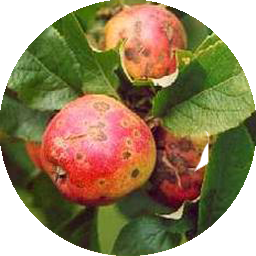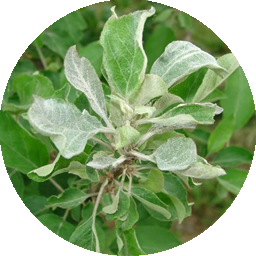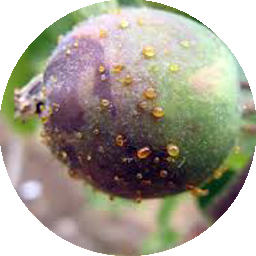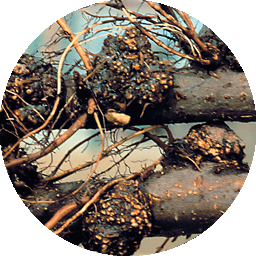Apple, Symptoms & Management
×
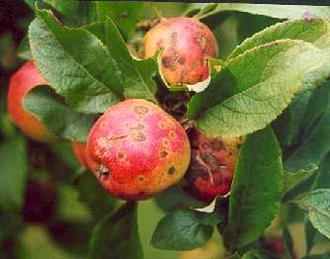
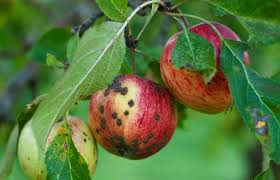
Symptoms:


1. Scab infections usually noticed on leaves and fruits.
2. Affected leaves become twisted or puckered and have black, circular spots on their upper Surface.
3. On the under surface of leaves, the spots are velvety and may coalesce to cover the whole leaf surface.
4. Severely affected leaves may turn yellow and drop.
5. Scab can also infect flower stems and cause flowers to drop.
6. Scabby spots on fruit begin as sooty, gray-black lesions and may have a white or red halo.
7. The lesions later become sunken and tan and may have spores around their margins.
8. Infected fruit become distorted and may crack, allowing entry of secondary organisms.
9. Pulp beneath scabby lesion may rot.
10. Infection spreads and causes damage in transport and storage.
11. Severely affected young fruit may drop.
Management:
1. Clean cultivation.
2. Spraying urea 5% on leaf litter and 2% on twigs as nitrogen inhibits pseudothecial formation and thereby reduces primary inoculum production.
3. Resistant varieties: Emira, red free, Ambstraking, Ambroyal, Ambrich and Ambred.
4. Spray Dodine 0.25% or captan 0.2% at short intervals after petal fall.
5. Single application of Difolaton 0.3% at green bud stage followed by Captan 0.2% at petal fall.
6. Spray schedule:
• 1st spray - Silver tip stage - 0.2% Captofol (or) 0.3% Captan
• IInd spray pink bud - 0.2% Captan (or) 0.3% Mancozeb
• IIIrd spray at petal fall – 0.2% Dodine 0.5% Carbendazim
• IVth spray - after 10 days - 0.2% Captan
• Vth spray - 15 days after - Mancozeb 0.3%
• Fruit set - 0.15% Captafol
×
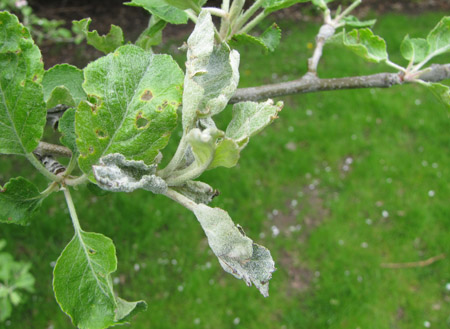
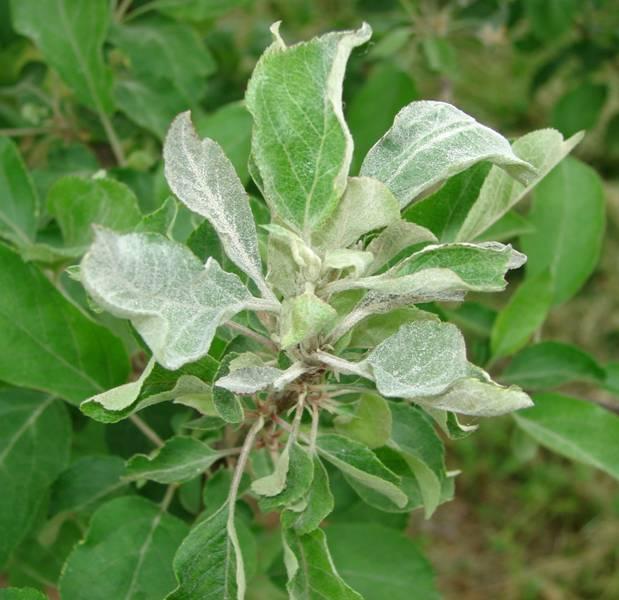
Symptoms:


1.Appear soon after the buds develop into new leaves and shoots
2.Small patches of white or grey powdery masses on under surface of leaves
3.Leaves grow longer and narrower than normal leaves and the margin is curled
4.Twigs covered with powdery mass
5.Affected fruits remain small and deformed and tend to develop roughened surface
6.In nursery plants, formation of wood is affected
Management:
1.Sanitation of orchard
2.Pre-bloom spray of lime sulphur (1:60)
3.Spray Dinocap @ 0.15% or Wettable Sulphur
4.Resistant varieties: Maharaja chunth and Golden Chinese (apple cultivars), Yantarka Altaskya, Dolgoe (Crab apple cultivars)
×

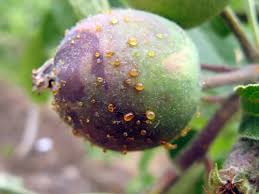
Symptoms:


1. All above ground tissues including blossoms, fruits, shoots, branches, and in the rootstock near the graft union on the lower trunk are affected
2. Blossom symptoms are first observed 1-2 weeks after petal fall. The floral receptacle, ovary, and peduncles become water soaked and dull, grayish green in appearance. Later these tissues shrivel and turn brown to black giving a burnt appearance
3. Tips of shoots may wilt rapidly. Leaves on diseased shoots often show blackening along the midrib and veins, before becoming fully necrotic.
4. Numerous diseased shoots give a tree burnt and blighted appearance
5. Bark on younger branches becomes darkened and water-soaked. At advanced stages, cracks will develop in the bark, and the surface will be sunken slightly
6. Wood under the bark will show streaked discolorations. Similar symptoms can be observed in infected apple rootstocks.
7. Infected small immature fruit becomes water soaked, then turn brown, shrivel,turn black and cling to the tree for several months after infection
8. Droplets of milky coloured, sticky ooze may appear on infected parts which usually turn amber coloured on exposure to air
Management:
1.During winter prune out and burn blighted twigs, branches and cankers, and even whole trees, at about 30 cm below the point of visible infection
2.Disinfect the tools after each cut with 10% sodium hypochlorite
3.Insect control
4.Resistant varieties
5.Dormant sprays with Bordeaux mixture
6.Bordeaux mixture + streptomycin is effective as blossom spray
×

Symptoms:

1. Small outgrowths on stem and roots near soil line
2.Galls are spherical, white or flesh coloured (young stage)
3. Galls become hard and corky on woody stems, knobby and knotty
4. Affected plants stunted with chlorotic leaves
Management:
1.Regulatory measures
2.Crop rotation with maize or other grain crops
3.Avoid injuries to roots or lower stem parts
4.Agrobacterium radiobacter (Strain K1026) should be applied to fresh wounds
